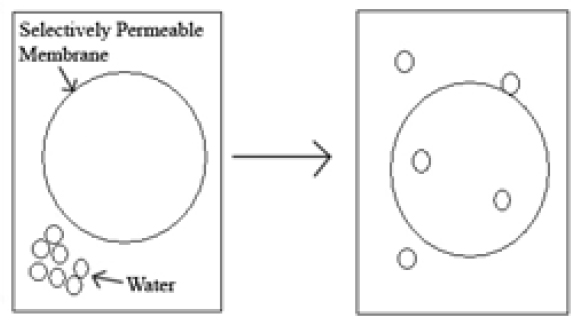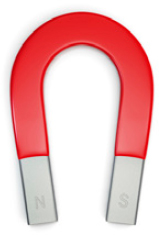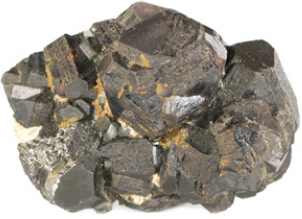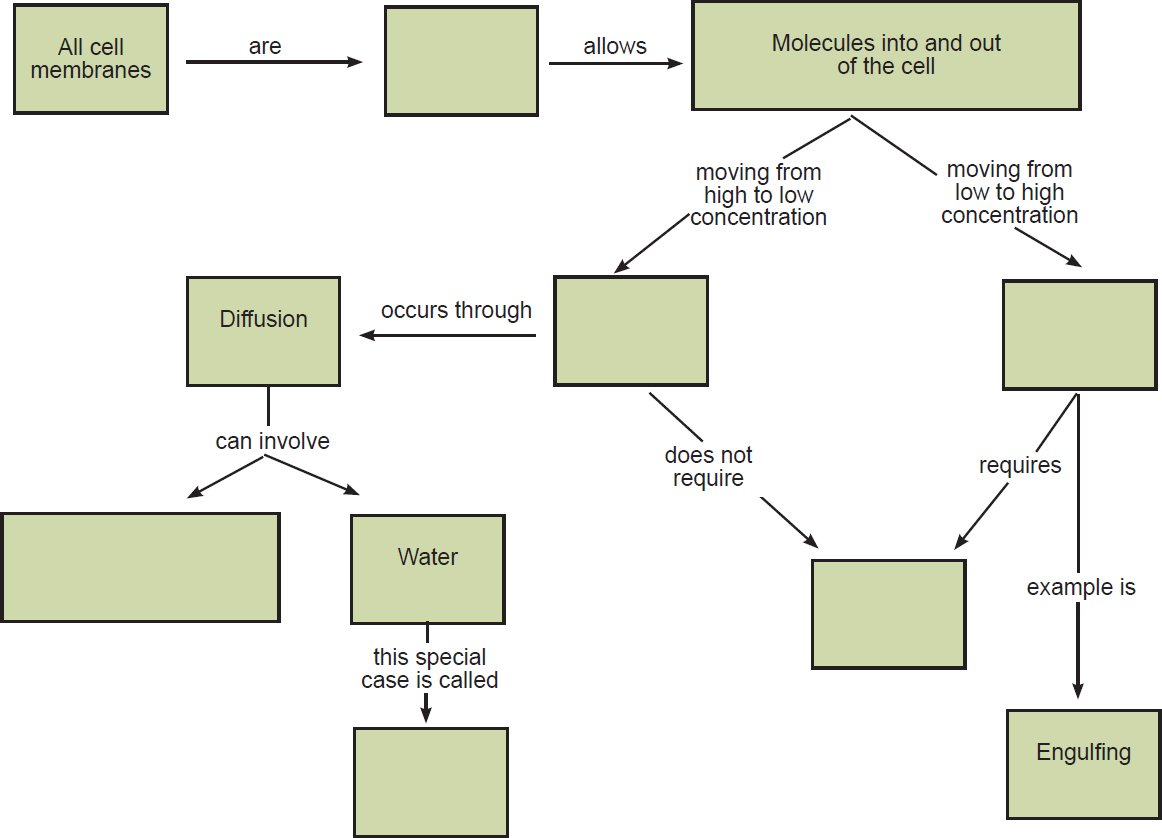Improving Science and Vocabulary Learning of English Language Learners
Diane August, Lauren Artzi, and Julie Mazrum, Center for Applied Linguistics
August, 2010
Download a PDF of this document ![]() (696 KB)
(696 KB)
Introduction
Current educational policy embodied by the No Child Left Behind Act requires that all students, including English language learners, meet high standards in science, reading, and math. While expectations for content area achievement are high, findings from the National Center for Education Statistics (n.d.) indicate that scores at all grade levels are considerably lower for English language learners than for their English-proficient peers. To help English language learners reach high standards in science when it is taught in their second language, it is crucial to build on prior research findings in designing and implementing science programs for these students.
This brief is a review of research on effective science instruction for English language learners, as well as on the role of English language proficiency, learning in a second language, and first language knowledge in science learning. We then briefly turn to findings from two intervention studies that were effective in building academic and discipline-specific vocabulary and science knowledge in English language learners. It is intended as an overview for researchers and educators.
Research on Effective Science Instruction for English Language Learners1
Findings from experimental and pre-experimental studies provide some evidence that effective first language instruction, most notably inquiry-based learning, may be a good starting place but it is not sufficient to help English language learners learn science (Amaral, Garrison, & Klentschy, 2002; Cuevas, Lee, Hart, & Deaktor, 2005; Fradd, Lee, Sutman, & Saxton, 2002; Lee, Deaktor, Enders, & Lambert, 2008; Lee, Deaktor, Hart, Cuevas, & Ender, 2005; Lee, Maerten-Rivera, Penfield, LeRoy, & Secada, 2008; Lynch, Kuipers, Pyke, & Szesze, 2005).
Lynch et al. (2005) examined the effect of a highly rated middle grades curriculum unit that was congruent with National Science Education Standards (National Research Council, 1996). The unit was “student-centered, hands-on, and phenomenon-based in which students explored four chemical reactions with increasing sophistication with the aim of helping them acquire a deep understanding of the target [science] standard/benchmark” (p. 921). No alterations for students’ language or cultural backgrounds were described by the authors. The findings indicate that students who had never received English for speakers of other languages (ESOL) services and students who had received but exited from these services significantly outperformed similar students in a control group who were not exposed to the intervention curriculum on measures of science achievement, basic learning engagement, and goal orientation. But students in the intervention group who were concurrently receiving ESOL services did not outperform similar students in the control group. Additionally, when researchers examined the growth in science knowledge of the three groups, they found that it was nearly flat for all students who were current recipients of ESOL services. This was not the case for the other two student groups, those who were no longer receiving ESOL or never had.
Interventions that build on effective first-language science teaching research but also take into account the language and cultural backgrounds of English language learners may be more promising. Studies by Lee et al. (2008a, 2008b), which were part of a five year professional development effort called Promoting Science among English Language Learners (P-SELL), built on research in effective first-language science teaching and aimed at improving science and literacy achievement of English language learners in urban elementary schools. The intervention employed in these studies consisted of curriculum units (student booklets, teachers’ guides, and science supplies) and professional development for instructors throughout the school year. The intervention attended to both the language and literacy needs of English language learners; for example, the student booklets included activities and strategies to strengthen students’ reading and writing by using “specific comprehension questions about inquiry activities, strategies to enhance comprehension of science information in expository text at the end of each lesson, and [focus on] various language functions (e.g., describing, explaining, reporting, drawing conclusions ‘in the context of science inquiry’)” (Lee et al., 2008b, p. 38). Language needs were also addressed by teaching and reinforcing key vocabulary and using “multiple modes of communication and representation (e.g., verbal, gestural, written, and graphic) to enhance students’ understanding” (Lee et. al, 2008b, p. 38). The lessons drew on students’ culture by providing science terms in Spanish and Haitian Creole. Professional development focused on science and math content as well as language and literacy development. Findings indicated significant pre- to posttest gains in science achievement for students in a treatment group that included current ESOL students, students exited within 2 years from ESOL, and students who had never been in ESOL or had been exited from ESOL for more than 2 years. Students currently in ESOL and students who had exited from ESOL or never been in ESOL showed comparable gains from pretest to posttest, suggesting that the intervention was not differentially effective for subgroups of students based on their status of participating in ESOL. The authors attribute the promising results of the intervention2 in part to the integrated approach to professional development that addressed English language learners’ “learning needs in English and the content areas simultaneously” (Lee et. al, 2008b, p. 49), as well as to providing teachers with the supplies they needed to carry out the intervention and ensuring that schools actually provided dedicated time for science instruction.
An array of research focused on science instruction for English language learners helped inform the intervention studies that are the subject of this brief and discussed in later sections. (Amaral et al., 2002; Cuevas et al., 2005; Fradd et al., 2002; Lee et al., 2005). For example, in one study (Fradd et al., 2002), each lesson emphasized a specific language function (e.g., describing, explaining), focused on vocabulary development, and allowed English language learners to use a variety of representational formats to communicate science knowledge. In a second study (Amaral et al., 2002), while most of the science instruction was in English (even in the bilingual arm of the study), teachers had the freedom to use Spanish for facilitation of instruction, including the use of support materials written in Spanish.
The Roles of English Language Proficiency, Learning in a Second Language, and First Language Knowledge in Science Learning
Studies that examined the relationship between levels of English proficiency and science learning have consistently found that limited English proficiency inhibited students’ science achievement when learning was in English (e.g., Curtis & Millar, 1988; Tobin & McRobbie, 1996; Torres & Zeidler, 2002). These studies support the premise that it is important to scaffold science instruction so that it is more comprehensible for English language learners.
Studies that investigated the role of classroom discourse and other forms of scaffolding describe how teachers mediate between students’ current English abilities and levels of science understanding and the more academic English and science knowledge being targeted (Gibbons, 2003; Parkinson, Jackson, Kirkwood, & Padayachee, 2007; Young & Nguyen, 2002). For example, in one study, teachers mediated language learning in several ways—mode shifting through recasting (e.g., the teacher recapping a student’s contribution to fit the broader pedagogic objectives of the curriculum), signaling to learners how to reformulate their talk (e.g., indicating a need for clarification, giving the student an opportunity for self-correction, supplying a recoded version), and recontextualizing students’ expressions of personal learning (e.g., helping students use the appropriate register and more specificity in their explanations [Gibbons, 2003]).
Finally, studies have indicated that when an English language learner’s first language shares cognates with English, first language knowledge can be helpful in science learning in English. Bravo, Hiebert, and Pearson (2007) found that approximately 88% of key science words selected for instruction were cognates in Spanish, and about half of them were high-frequency words in Spanish, making them more likely to be known by Spanish speakers, including those who had not had high levels of schooling in their first language. Previous research has indicated that from Grades 4 to 8, student recognition of cognates increases rapidly (Hancin-Bhatt & Nagy, 1994) and that older students are able to transfer cognate knowledge from their first to their second language (Durgunoglu, Nagy, & Hancin-Bhatt, 1993; Jimenez, García, & Pearson, 1996).
In sum, the literature indicates that promising instructional approaches build on what is known from first-language science knowledge and also take into account the language and cultural backgrounds of the students. Examples include using activities and strategies to enhance comprehension of science information (e.g., interactive questioning on expository text); focusing on language functions (e.g., describing, explaining, reporting, drawing conclusions in the context of science inquiry); explicitly teaching and reinforcing key vocabulary; and strategically using students’ first language to enhance their understanding.
CREATE Intervention Studies
Two science interventions were conducted under the auspices of CREATE. An overriding principle in our research was to make science instruction effective for both English language learners and English-proficient students because these two groups of students are often placed in the same classrooms in the middle grades. Thus, the interventions we studied used as a starting point what we know about high-quality science instruction for students in the middle grades. We also drew on research about the role of English language proficiency, learning in a second language, and knowledge acquired in the first language (in this case Spanish) to tailor the interventions to meet the language and literacy needs of English language learners.
Intervention A
The first intervention was conducted in a district with a high percentage of Latino English language learners in the Rio Grande Valley of Texas. It was implemented in 18 schools by 30 teachers who participated in professional development before and during the project. Mentors worked with teachers to help ensure that the curriculum was implemented as intended. The intervention was focused on developing third and fourth graders’ academic language associated with ESL science lessons. The intervention consisted of a 60-minute, language arts add-on segment to a summer school science enrichment program that used the Full Option Science System (FOSS) materials. FOSS is a research-based science curriculum for Grades K–8 developed at the University of California at Berkeley. The FOSS program was created to engage students in actively constructing ideas through their own inquiries, investigations, and analyses as they explore the natural world, with the goal of helping them appreciate the scientific process, learn important concepts, and develop the ability to think critically.
Methods to develop students’ general academic and discipline-specific vocabulary during the language arts segment included pre- and postteaching of vocabulary using visuals; prereading activities that consisted of a picture walk and a “hook” question addressing the central concept of the FOSS science lesson; and shared interactive reading, in which students and teachers discussed text written by the investigators to reinforce the science concepts taught during the FOSS lesson and students answered questions that required them to use the targeted vocabulary. Glossaries, concept maps, and review games were used to reinforce the targeted vocabulary.
At the beginning of each lesson, the teacher taught key words from the passage to be read during the lesson. To introduce each word, the teacher used a vocabulary card showing two pictures to demonstrate the word. Definitions for the target words were provided in both English and Spanish, and students were taught to draw on their cognate knowledge. Additionally, teachers explained how the picture demonstrated the concept being taught. Below is an excerpt from the vocabulary instruction to prepare students for reading a passage about magnets.
First, the teacher showed the front of the card (Figure 1). Then the teacher said the following:
- A word in the text is interact. When two things interact, they have an effect on, or change, each other.
- En español “interact” quiere decir interactuar. Cuando dos cosas interactúan, tienen un efecto sobre, o causan un cambio hacia, cada cosa.
- Interact in English and interactuar in Spanish are cognates.
- Now, let’s look at a picture that demonstrates the word interact. When these two liquids [point to the green and the red liquids in the bottom pictures] are mixed together, they interact with each other. Their colors will change, and they will also produce bubbles [point to the top picture].
|
Interact
|
Interact
|
|
| Figure 1. Vocabulary card, side 1. | Figure 2. Vocabulary card, side 2. |
Next, the teacher showed the reverse side of the card (Figure 2), which included a second picture of the concept, and asked students to turn to a partner and explain how the new picture demonstrated the word’s meaning.
After the teacher taught the vocabulary words, she engaged the students in interactive reading (Figure 3). She first posed a “hook” question for students to keep in mind as they listened to the passage being read. Then she led students in a picture walk of a passage in the FOSS materials by pointing to the pictures in the text and discussing them with the students. After the picture walk, the teacher read the passage out loud while the students followed along in their student readers (key words that had been taught prior to the reading were highlighted). During the read-aloud the teacher would use ESL scaffolding techniques (these were not scripted, but had been taught to teachers prior to the intervention) to make the meaning of the passage clear. Techniques included pointing to pictures or gesturing while reading, as well as paraphrasing sections of the text likely to be challenging for English learners. Students were asked questions about the text as they listened and/or read along with the teacher. Next, students reviewed the vocabulary words using a student glossary (Figure 4). Later in the week, students completed a graphic organizer that helped them synthesize the concepts they learned while reading the entire passage.
Hook Question Ask students the "hook" question and discuss their answers briefly. Note that students to not yet know the answer. "Hook" question: What kinds of materials do magnets attract? What kinds of materials do magnets repel, or push away? Lodestone is found in many parts of the world, including the United States. Lodestone is a natural magnet. Like all magnets, it attracts objects made of iron or other metals like steel that are made from iron. However, magnets' attraction to some metals is not the only special thing about them. Another interesting thing is how magnets interact, or work with each other. Have you ever had a chance to play with little wooden trains that hook together with magnets? Because if you have, you would know that some of the magnets stick together just fine, but some push each other apart! Q: It is quite normal or usual to think of magnets as attracting or pulling metal or other magnets to them. But what's another way magnets interact, or behave with each other? [Anticipated response: Magnets also repel one another, or push one another away. |
|
Magnet |
Lodestone |
| Figure 3. Interactive reading. | |
Results show that students, all of whom were English language learners in this particular study, performed significantly better on the posttest with vocabulary that they had been explicitly taught using intervention methods than on vocabulary they were exposed to, but not explicitly taught.
| Interact | When two things interact, they have an effect on or change each other. When these two liquids are mixed together, they will interact with each other. Your sentence: |
 |
| Figure 4. Student glossary (intervention A). | ||
Intervention B
The second intervention was part of Quality English and Science Teaching (QuEST), a CREATE project designed to develop the science knowledge and academic language of English language learners and their English-proficient classmates in the middle grades. Ten sixth-grade science teachers in five middle schools in the Rio Grande Valley of Texas participated in the study. The sample included 890 students; 562 were English language learners and 328 were English proficient.
The intervention built on the district curriculum, which used Prentice Hall textbooks and workbooks, as well as district-developed labs that were aligned with the textbook content. The intervention consisted of two components that were not part of the district’s curriculum: instructional materials following the principles of the Five E model of science instruction and professional development to help teachers in using the instructional materials. The Five E model, a highly rated inquiry approach to teaching science to monolingual English speakers, was developed by the Biological Science Curriculum Study (BSCS)3. The Five E model of learning consists of activities designed to engage, explore, explain, extend, and evaluate. The curriculum also called for direct instruction of both general and discipline-specific vocabulary. Definitions of the vocabulary were provided in students’ first and second languages, and students were taught to draw on cognate knowledge.
The QuEST intervention required that teachers use scaffolding techniques shown to foster English language learners’ understanding of academic content (August & Shanahan, 2008). Visuals were consistently used in science lessons, including illustrations of vocabulary concepts and graphic organizers. Students were given a preview of the experiments they would conduct to ensure that they understood the goals and procedures. Teachers were shown how to engage in instructional conversations during science tasks and while reading the textbook. This involved lessons based in discussion and “geared toward creating opportunities for students’ conceptual and linguistic development. The teacher encourages expression of students’ own ideas, builds upon information students provide and experiences they have had, and guides students to increasingly sophisticated levels of understanding” (Goldenberg, 1991, p. 2). Thus, instructional conversations supported development of students’ conceptual knowledge and oral proficiency. Teachers were encouraged to have students with very limited English proficiency respond in their first language and to interpret or have a classmate interpret their responses into English.
For example, in a lesson on the concept of osmosis, the teacher had the students engage in an introduction activity in which they observed the process of osmosis with a tea bag and water. For each activity, students were given a chart containing instructions and on which they could record relevant information and answer related questions. Figure 5 is an excerpt from the teacher’s guide for the activity. It is important to note that teachers used the guide to prepare for the lesson. While teaching the lesson, the teachers used teacher charts that included a brief summary of tasks used in the lesson. The students also used charts to record observations at 30 seconds, 1 minute, and 1 minute and 30 seconds. At the end of the lesson, students reviewed the concepts by completing the student glossary. Figure 6 is an excerpt from the glossary. At the end of each week, students had an opportunity to synthesize what they had learned by completing a concept map that relates the concepts of diffusion and osmosis to the more general concept of cell transport (Figure 7).
Posttest results of students who had received the intervention showed statistically significant improvement over those who had not received it for both science knowledge and vocabulary.
Activity Overview: Students review and apply the concepts of diffusion and osmosis.
|
| Figure 5. Excerpt of activity in teacher's guide. |
| osmosis | Osmosis is the process where water molecules En español “osmosis” es igual que en inglés, osmosis. Osmosis es el proceso a través del cual el agua se mueve dentro y fuera de las células. Osmosis es difusión, pero con agua. The two pictures on the right illustrate osmosis. Your notes: |
 |
| Figure 6. Student glossary (intervention B). | ||
Student Chart Title: Cell Transport Use the word bank to fill in the blank squares in the concept map about cell transport. |
|
|
|
| Figure 7. Concept map. | |
Conclusion
Both CREATE interventions were effective in developing the academic vocabulary of English learners. Intervention B, the QuEST intervention, which had an additional focus on building science content knowledge, was successful in accomplishing this goal (August, Branum-Martin, Hagan, & Francis, 2009). This research makes an important contribution by demonstrating that combining good science teaching with scaffolding and a focus on language development is an effective method for helping English language learners in science classrooms.
Acknowledgements
The work reported here was supported by Grant Number R305A050056 from the Institute of Education Sciences, U.S. Department of Education to the University of Houston. The contents do not necessarily represent the positions or policies of these agencies, and readers should not assume endorsement of these positions by the federal government.
Notes
1 This section and the following are adapted from August et al. (2009).
2 In follow-up work with fifth graders, there were significant differences in favor of the treatment group on the Florida Science test. It should be noted that this analysis did not control for initial levels of science achievement because such a measure was not available for students in the comparison schools (O. Lee, personal communication, December 23, 2008). Additionally, when compared with control students, the treatment-group students showed higher scores on the measurement strand of a statewide math assessment. While all demographic groups of students (including English language learners) in the treatment group consistently performed better than their counterparts on the measurement strand of the Florida Math test, the difference was not statistically significant.
3 BSCS is a nonprofit corporation that endeavors to improve all students’ understanding of science and technology by developing exemplary curricular materials, supporting their widespread and effective use, providing professional development, and conducting research and evaluation studies.
References
Amaral, O. M., Garrison, L., & Klentschy, M. (2002). Helping English learners increase achievement through inquiry-based science instruction. Bilingual Research Journal, 26(2), 213-239.
August, D., Branum-Martin, L., Hagan, E., & Francis, D. (2009). The impact of an instructional intervention on the science and language learning of middle grade English language learners. Journal of Research on Educational Effectiveness, 2, 345-376.
August, D., & Shanahan, T. (Eds.). (2008). Developing reading and writing in second-language learners. New York: Routledge.
Cuevas, P., Lee, O., Hart, J., & Deaktor, R. (2005). Improving science inquiry with elementary students of diverse backgrounds. Journal of Research in Science Teaching, 42(3), 337-357.
Curtis, S., & Millar, R. (1988). Language and conceptual understanding in science: A comparison of English- and Asian-language-speaking children. Research in Science and Technological Education, 6(1), 61-77.
Durgunoglu, A. Y., Nagy, W. E., & Hancin-Bhatt, B. J. (1993). Cross-language transfer of phonological awareness. Journal of Educational Psychology, 85, 453-465.
Fradd, S. H., Lee, O., Sutman, F. X., & Saxton, M. K. (2002). Materials development promoting science inquiry with English language learners: A case study. Bilingual Research Journal, 25, 479-501.
Gibbons, P. (2003). Mediating language learning: Teacher interactions with ESL students in a content-based classroom. TESOL Quarterly, 37(2), 247-273.
Goldenberg, C. (1991). Instructional conversations and their classroom applications (NCRCDSLL Educational Practice Reports, Paper EPR02). Center for Research on Education, Diversity & Excellence. Retrieved from http://repositories.cdlib.org/crede/ncrcdslleducational/EPR02
Hancin-Bhatt, B., & Nagy, W. E. (1994). Lexical transfer and second language morphological development. Applied Psycholinguistics, 15(3), 289-310.
Jimenez, R. T., García, G. E., & Pearson, D. P. (1996). The reading strategies of bilingual Latina/o students who are successful English readers: Opportunities and obstacles. Reading Research Quarterly, 31(1), 90-112.
Lee, O., Deaktor, R., Enders, C., & Lambert, J. (2008a). Impact of a multi-year professional development intervention on science achievement of culturally and linguistically diverse elementary students. Journal of Research in Science Teaching, 45(6), 726-747.
Lee, O., Deaktor, R. A., Hart, J. E., Cuevas, P., & Enders, C. (2005). An instructional intervention’s impact on the science and literacy achievement of culturally and linguistically diverse elementary students. Journal of Research in Science Teaching, 42, 857-887.
Lee, O., Maerten-Rivera, J., Penfield, R., LeRoy, K., & Secada, W. G. (2008b). Science achievement of English language learners in urban elementary schools: Results of a first-year professional development intervention. Journal of Research in Science Teaching, 45(1), 31-52.
Lynch, S., Kuipers, J., Pyke, C., & Szesze, M. (2005). Examining the effects of a highly rated science curriculum unit on diverse students: Results from a planning grant. Journal of Research in Science Teaching, 42, 921-946.
National Center for Education Statistics. (n.d.). National Assessment of Educational Progress. Retrieved from http://nationsreportcard.gov/science_2005/s0115.asp?tab_id=tab2&subtab_id=Tab_1&printver=#chart
National Research Council. (1996). National science education standards. Washington, DC: National Academy Press.
Parkinson, J., Jackson, L., Kirkwood, T., & Padayachee, V. (2007). A scaffolded reading and writing course for foundation level science students. English for Specific Purposes, 26, 443-461.
Tobin, K., & McRobbie, C. J. (1996). Cultural myths as constraints to the enacted science curriculum. Science Education, 80, 223-241.
Torres, H. N., & Zeidler, D. L. (2002). The effects of English language proficiency and scientific reasoning skills on the acquisition of science content knowledge by Hispanic English language learners and native English language speaking students. Electronic Journal of Science Education, 6(3).
Young, R. F., & Nguyen, H. T. (2002). Modes of meaning in high school science. Applied Linguistics, 23(3), 348-372.







